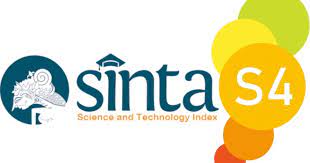Flipped classroom strategy and Saudi secondary students' grammar proficiency
DOI:
https://doi.org/10.22219/englie.v5i1.29409Keywords:
Flipped classroom, blended learning, EFL, grammar, teaching strategies, Saudi ArabiaAbstract
This study investigated the impact of FC on Saudi secondary school students' grammar proficiency. The participants in this study were 61 Saudi female students from the second level of secondary school. The participants were divided into two groups: the control group consisted of 30 students, and the experimental group consisted of 31 students. The control group was taught using the traditional method of instruction, while the experimental group was taught using FC. The data collection instrument was a pretest and posttest that were designed by the researchers. The pretest was administered at the beginning of the intervention, and the posttest was administered after a period of four weeks. The data from the pretest and posttest were analyzed quantitatively. The findings of the study revealed that FC did not have a significant impact on students' performance in grammar. There was no statistical difference between the scores of the students in both groups in the posttest. This study contributes to the existing literature on FC by providing evidence that FC does not have a significant impact on students' performance in grammar. One explanation is the potential mismatch between the self-directed nature of online education and the level of maturity and discipline typically expected from high school students. Also, other factors, such as the quality of the instructional materials and the teacher's pedagogical skills, may be more important than FC in improving students' grammar proficiency.
Downloads
References
Abeysekera, L., & Dawson, P. (2015). Motivation and cognitive load in the flipped classroom: definition, rationale and a call for research. Higher Education Research & Development, 34(1), 1–14.
Alhamami, M. (2023). English as a Medium of Education (EME): Gender, attitudes, and cumulative GPA. Journal of Research in Language & Translation Issue, 3(2), 69-90.
Alhamami, M., & Khan, M. R. (2019). Effectiveness of flipped language learning classrooms and students’ perspectives. Journal on English as a Foreign Language, 9(1), 71–86. https://doi.org/10.23971/jefl.v9i1.1046
Al-Harbi, S. S., & Alshumaimeri, Y. A. (2016). The flipped classroom impact in grammar class on EFL Saudi secondary school students’ performances and attitudes. English Language Teaching, 9(10), 60–80.
Al-Naabi, I. S. (2020). Is it worth flipping? The impact of flipped classroom on EFL students’ grammar. English Language Teaching, 13(6), 64–75.
Andrews, T. M., Leonard, M. J., Colgrove, C. A., & Kalinowski, S. T. (2011). Active learning not associated with student learning in a random sample of college biology courses. CBE—Life Sciences Education, 10(4), 394–405.
Basal, A. (2015). The implementation of a flipped classroom in foreign language teaching. Turkish Online Journal of Distance Education, 16(4), 28–37. https://doi.org/10.17718/tojde.72185
Bergmann, J., & Sams, A. (2012). Flip your classroom: Reach every student in every class every day. International society for technology in education.
Berrett, D. (2012). How ‘flipping’the classroom can improve the traditional lecture. The Chronicle of Higher Education, 12(19), 1–3.
Brown, H. D. (2010). Language Assessment: Principles and Classroom Practices.
Cabugsa, D. J. (2022). Pre-service teachers’ autonomy in English language learning. Saudi Journal of Language Studies, 2(2), 107–127. https://doi.org/10.1108/SJLS-03-2022-0025
Chang, D. Y.-S. (2023). Flipping EFL low-proficiency students’ learning: An empirical study. Language Teaching Research, 0(0). https://doi.org/10.1177/13621688231165474
Gelan, A., Fastré, G., Verjans, M., Martin, N., Creemers, M., Lieben, J., Depaire, B., Thomas, M., Janssenswillen, G., & Thomas, M. (2018). Affordances and limitations of learning analytics for computer-assisted language learning : A case study of the VITAL project. Computer Assisted Language Learning, 31:3, 294-319. https://doi.org/10.1080/09588221.2017.1418382
Haghighi, H., Jafarigohar, M., Khoshsima, H., & Vahdany, F. (2019). Impact of flipped classroom on EFL learners’ appropriate use of refusal: Achievement, participation, perception. Computer Assisted Language Learning, 32(3), 261–293. https://doi.org/10.1080/09588221.2018.1504083
Han, S. (2022). Flipped classroom: Challenges and benefits of using social media in English language teaching and learning. Frontiers in Psychology, 13, 996294. https://doi.org/10.3389/fpsyg.2022.996294
Hao, Y. (2016). Middle school students’ flipped learning readiness in foreign language classrooms: Exploring its relationship with personal characteristics and individual circumstances. Computers in Human Behavior, 59, 295–303. https://doi.org/10.1016/j.chb.2016.01.031.
Hassell, D. (2022). The use of flipped classrooms in a higher education setting: Students’ perspectives. Computer Assisted Language Learning, 23(4), 120–138.
Hung, H. T. (2015). Flipping the classroom for English language learners to foster active learning. Computer Assisted Language Learning, 28(1), 81–96. https://doi.org/10.1080/09588221.2014.967701
Hinkel, E. (2016). Teaching English grammar to speakers of other languages. Routledge.
Jensen, J. L., Kummer, T. A., & Godoy, P. D. D. M. (2015). Improvements from a flipped classroom may simply be the fruits of active learning. CBE-Life Sciences Education, 14(Spring), 1–12. https://doi.org/10.1187/10.1187/cbe.14-08-0129
Khazaie, S., & Ebadi, S. (2023). Exploring the feasibility of augmented reality game-supported flipped classrooms in reading comprehension of English for Medical Purposes. Computer Assisted Language Learning, 1–34. https://doi.org/09588221.2023.2173612
Khoiriyah, K. (2021). Flipping the classroom to enhance EFL students’ listening skill. Journal on English as a Foreign Language, 11(1), 21–41. https://doi.org/10.23971/jefl.v11i1.2010
Lee, Y. Y., & Martin, K. I. (2019). The flipped classroom in ESL teacher education: An example from CALL. Education and Information Technologies 25. 2605-2633. https://doi.org/10.1007/s10639-019-10082-6
Lin, C. H., Zhang, Y., & Zheng, B. (2017). The roles of learning strategies and motivation in online language learning: A structural equation modeling analysis. Computers and Education, 113, 75–85. https://doi.org/10.1016/j.compedu.2017.05.014
Marca, A. La, & Longo, L. (2017). Addressing student motivation, self-regulation, and engagement in flipped classroom to decrease boredom. International Journal of Information and Education Technology, 7(3), 230–235. https://doi.org/10.18178/ijiet.2017.7.3.871
Marsh, D. (2012). Blended learning: Creating learning opportunities for language learners. New York: Cambridge University Press.
McKinley, J., & Rose, H. (2019). The Routledge handbook of research methods in applied linguistics. Routledge.
Means, B., Toyama, Y., Murphy, R., & Baki, M. (2013). The effectiveness of online and blended learning: A meta-analysis of the empirical literature. Teachers College Record, 115(3), 1–47.
Missildine, K., Fountain, R., Summers, L., & Gosselin, K. (2013). Flipping the classroom to improve student performance and satisfaction. Journal of Nursing Education, 52(10), 597–599. https://doi.org/10.3928/01484834-20130919-03
Nurkamto, J., Mujiyanto, J., & Yuliasri, I. (2019). The implementation of station rotation and flipped classroom models of blended learning in EFL learning. English Language Teaching, 12(12), 23–29. https://doi.org/10.5539/elt.v12n12p23
Oraif, I. M. K. (2018). An Investigation into the Impact of the Flipped Classroom on Intrinsic Motivation (IM) and Learning Outcomes on an EFL Writing Course at a University in Saudi Arabia Based on Self-determination Theory (SDT) [[Doctoral dissertation]., University of Leicester.]. https://hdl.handle.net/2381/42165
Pawlak, M. (2021). Teaching foreign language grammar: New solutions, old problems. Foreign Language Annals, 54(4), 881–896. https://doi.org/10.1111/flan.12563
Rajeh, H. S. (2023). Saudi teachers’ perspectives on flipped learning: Are they ready and willing? Saudi Journal of Language Studies. https://doi.org/SJLS-02-2023-0005
Roux, P. W., & Hamciuc, M. (2014). How flipped classrooms can benefit the development of autonomous learning. The Kyushu Academic Society of English Language Education (KASELE), 42, 1–10.
Shaari, N. D., Shaari, A. H., & Abdullah, M. R. (2021). Investigating the impact of flipped classroom on dual language learners’ perceptions and grammatical performance. Studies in English Language and Education, 8(2), 690–709. https://doi.org/10.24815/siele.v8i2.18872
Shih, H. chia J., & Huang, S. hui C. (2019). College students’ metacognitive strategy use in an EFL flipped classroom. Computer Assisted Language Learning, 0(0), 1–30. https://doi.org/10.1080/09588221.2019.1590420
Staker, H., & Horn, M. B. (2012). Classifying K–12 blended learning. Innosight Institute, Inc
Stickler, U. (2022). Technology and language teaching. Cambridge University Press.
Strelan, P., Osborn, A., & Palmer, E. (2020). The flipped classroom: A meta-analysis of effects on student performance across disciplines and education levels. Educational Research Review, 30, 100314. https://doi.org/10.1016/j.edurev.2020.100314.
Su Ping, R. L., Verezub, E., Adi Badiozaman, I. F. bt, & Chen, W. S. (2019). Tracing EFL students’ flipped classroom journey in a writing class: Lessons from Malaysia. Innovations in Education and Teaching International, 00(00), 1–12. https://doi.org/10.1080/14703297.2019.1574597
Vitta, J. P., & Al-Hoorie, A. H. (2023). The flipped classroom in second language learning: A meta-analysis. Language Teaching Research, 27(5), 1268–1292. Language Teaching Research, 27(5), 1268-1292. https://doi.org/10.1177/1362168820981403
Yu, Z., & Gao, M. (2022). Effects of video length on a flipped English classroom. Sage Open, 12(1), 21582440211068470.
Downloads
Published
How to Cite
Issue
Section
License
Copyright (c) 2024 AlQout,A.M., & Alhamami, M.

This work is licensed under a Creative Commons Attribution-ShareAlike 4.0 International License.
Authors who publish with English Learning Innovation (englie) agree to the following terms:
- For all articles published in English Learning Innovation (englie), copyright is retained by the authors. Authors give permission to the publisher to announce the work with conditions. When the manuscript is accepted for publication, the authors agree to automatic transfer of the publishing right to the publisher.
- Authors retain copyright and grant the journal right of first publication with the work simultaneously licensed under a Creative Commons Attribution-ShareAlike 4.0 International License that allows others to share the work with an acknowledgement of the work's authorship and initial publication in this journal.
- Authors are able to enter into separate, additional contractual arrangements for the non-exclusive distribution of the journal's published version of the work (e.g., post it to an institutional repository or publish it in a book), with an acknowledgment of its initial publication in this journal.
- Authors are permitted and encouraged to post their work online (e.g., in institutional repositories or on their website) prior to and during the submission process, as it can lead to productive exchanges, as well as earlier and greater citation of published work (See The Effect of Open Access).
This work is licensed under a Creative Commons Attribution-ShareAlike 4.0 International License.
















1.png)












